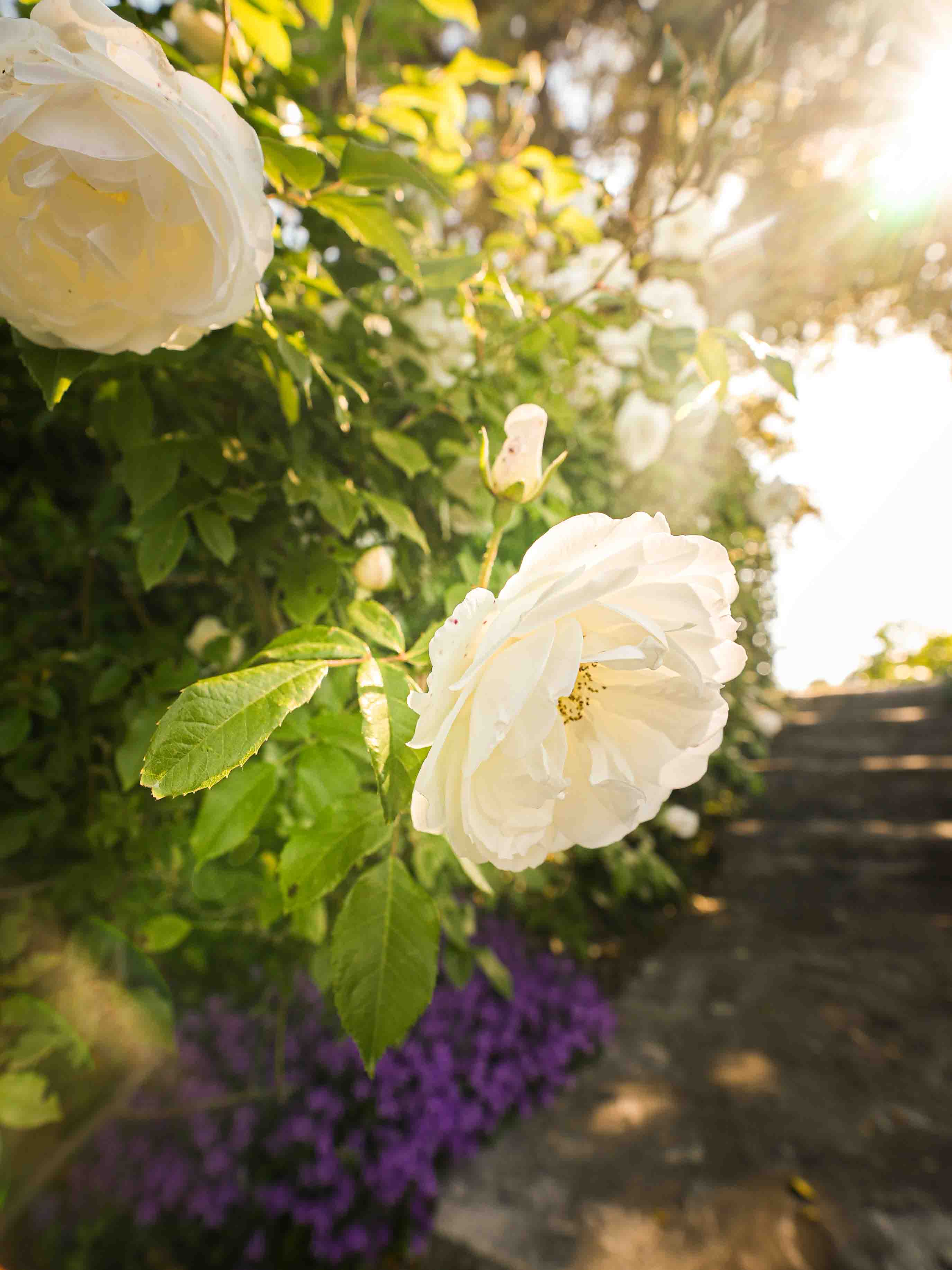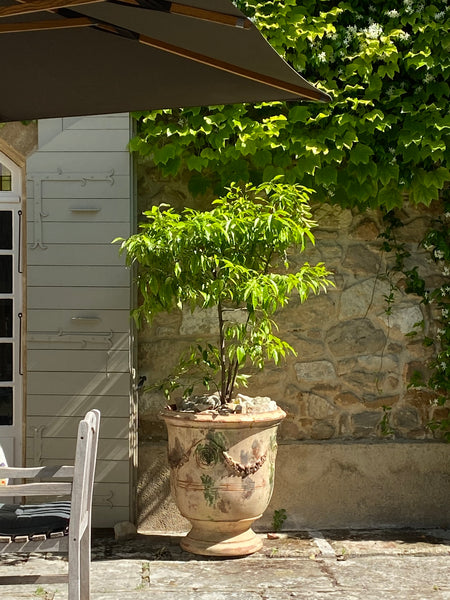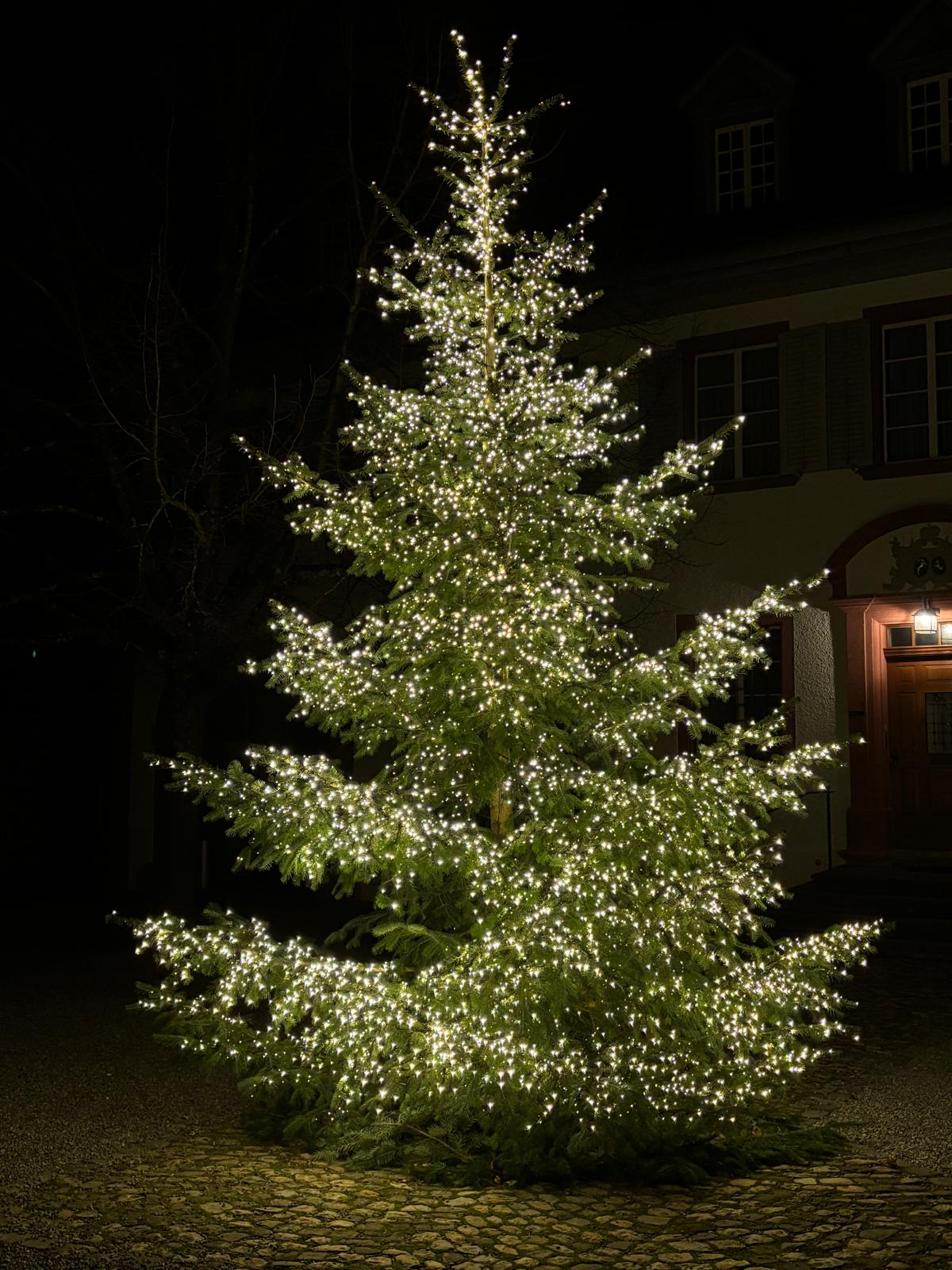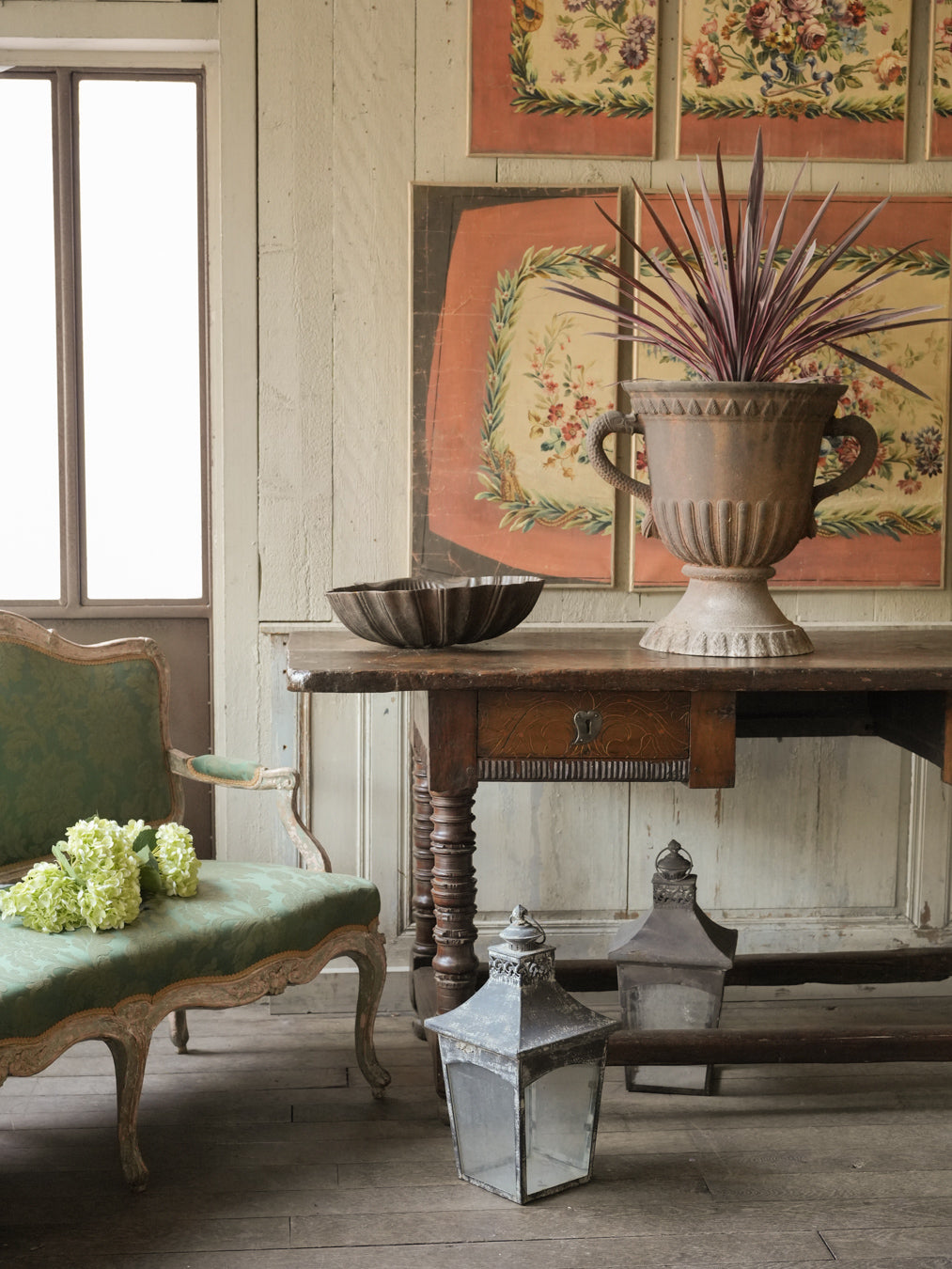
An introduction to classic French garden pots, planters, urns, and olive jars
French garden vessels capture a unique blend of beauty and heritage, with pots and urns that stand out for their quality and craftsmanship. Many are handmade following age-old techniques, their designs reflecting centuries of savoir-faire. These pièces de jardin span an impressive range of styles, offering something to complement every outdoor space with authentic French charm.
This article will introduce you to the following types of pots:
Chez Pluie, nestled in the heart of Provence, takes pride in offering a diverse and ever-evolving selection of French pots, available for purchase online both domestically and internationally. Many of these pieces are not only unique and enchanting but also preloved, making them an eco-friendly choice for conscious consumers. Whether you're seeking something special or playful for your garden, Chez Pluie's collection is sure to inspire. Explore their full range of French planters online to order directly from France, or continue reading to delve into the rich history and distinctive charm that make these vessels truly extraordinary.

1) Anduze Urns - timeless, elegant
Anduze urns, whether antique, vintage, or newly crafted, embody timeless elegance with their signature bell shape. Named after Anduze, a charming commune in the Gard department of southern France near Uzès and Alès, these urns are celebrated for their classical style and rich heritage. Handcrafted using techniques perfected over centuries, they showcase pottery at its finest. Adorned with intricate classical reliefs of garlands and the faces of ancient gods, Anduze garden urns bring a touch of history and artistry to any outdoor space.
Anduze urns are available in an array of distinctive colors, offering versatility to suit any setting. At Chez Pluie, you can discover antique or vintage Anduze urns, or commission an artisan-made pot glazed in your preferred hue. The bespoke Anduze urn pictured above features a natural antique finish and can be custom-ordered through Chez Pluie, blending timeless craftsmanship with your unique style.
Pictured above are Anduze urns and olive jars, showcasing stunning glazes in honey, green, and flame tones. These vibrant examples highlight just a few of the glazing options available for Anduze urns. Each piece can be ordered online through Chez Pluie, allowing you to bring a touch of Provençal charm to your home with ease.

Water repellant treatment for Anduze urns
For those living in regions where temperatures drop below freezing, Chez Pluie offers the option to apply a water-repellent treatment to your urn before shipping. Simply request this service when placing your order to ensure your piece is protected and ready to withstand colder climates.
Biot-style jars made in Anduze
Pictured above is a Biot-style jar crafted in Anduze, currently available for purchase online at Chez Pluie. These jars are custom-made by skilled artisans in Anduze, combining traditional craftsmanship with timeless design to create pieces that are both functional and decorative.
2. Biot Jars - the French olive jar
Biot jars are gracefully bulbous earthenware vessels, glazed only on the interior and around the neck, showcasing their rustic charm. Since at least the Middle Ages, the Provençal village of Biot in southeastern France has been renowned for crafting these iconic pots, thanks in part to the distinctive quality of the region's terra-cotta.
While traditionally used for storing olives or oil, many Biot jars today serve modern purposes, often displayed indoors as cachepots or filled with branches, walking sticks, or other decorative elements. Antique Biot jars are equally stunning as standalone pieces, their understated beauty effortlessly evoking the timeless appeal of the Mediterranean.
Pictured above is a magnificent, old, weathered Biot jar, handcrafted in the 19th century and available for purchase online at Chez Pluie. Rich with history and character, this exceptional piece is part of a large range of Biot jars that can be displayed indoors or outdoors, bringing timeless Provençal elegance to any setting.
Contemporary Biot-style jars made in Anduze
As noted earlier in the section on Anduze urns, it is also possible to acquire newly crafted Biot-style urns. Chez Pluie offers a range of artisan-made olive jars, custom-made to order in Anduze. Pictured above is an example showcasing one of the beautiful glazing options available.
For a deeper dive into the history and tradition of these iconic vessels, see "The Biot Jar - an Ancient French Tradition."
3. Medici urns - Classic beauty
Medici urns, a timeless symbol of elegance and refinement, draw their name and inspiration from the renowned Medici Vase—a monumental marble masterpiece adorned with intricate bas-reliefs. Originally crafted in Athens in the first century BC, this extraordinary vase, standing an impressive one and a half meters tall, was lost to history for centuries. It reappeared in 1598 in Rome, discovered within the inventory of the Villa Medici, a property owned by the influential Medici family.
The Medicis, one of the most powerful dynasties of the Renaissance, were renowned as patrons of the arts, amassing an unparalleled collection of antiquities. Their devotion to preserving and celebrating classical art solidified their legacy as cultural icons. The Medici Vase became a symbol of their refined taste, embodying their passion for beauty and heritage.
Since the late 18th century, the Medici Vase has been displayed at the Uffizi Gallery in Florence, captivating visitors with its grandeur and timeless charm. Its design continues to inspire Medici urns, which echo the classical beauty of the original while adding a touch of French sophistication. Today, these urns remain a testament to the enduring allure of the Medici family’s artistic legacy and their profound impact on cultural history.

The Industrial Revolution ushered in the ability to produce Medici urns on a larger scale, making it possible to find numerous examples from the 19th and 20th centuries in a variety of sizes, designs, and materials, including cast iron and concrete. The Medici urn pictured above is loosely inspired by those found in French châteaux, where these elegant vessels often adorn symmetrical gardens brimming with flowers or grace the tops of grand staircases and gateways, adding a touch of timeless sophistication to their surroundings.
4. Castelnaudary planters
These stunning green-glazed garden planters from Castelnaudary typically date back to the 19th century, showcasing a rich heritage of French craftsmanship. Castelnaudary, a charming commune in the Occitanie region of France—an area formed by the merger of Languedoc-Roussillon and Midi-Pyrénées—has long been celebrated for its artisanal pottery. These planters capture the essence of timeless French elegance, making them a coveted addition to any garden or outdoor space.
At the request of the Mayor, Castelnaudary planters adorned the boulevards of Toulouse during the mid-19th century, adding a touch of verdant charm to the city's streets. With a drainage hole in the base, these versatile planters can be used to showcase vibrant greenery or left simply laissez-faire to highlight their sculptural beauty. Discover the exquisite Castelnaudary planters available at Chez Pluie and bring a piece of French history into your home or garden.
5. Willy Guhl Eternit planters
Willy Guhl, a pioneering figure in Swiss industrial design, is celebrated for his innovative approach to materials and his timeless minimalist creations. Born in 1915 in Stein am Rhein, Switzerland, Guhl initially trained as a carpenter before further honing his skills at the Zurich School of Applied Arts. After completing his studies, he returned to the school as a teacher, inspiring future generations of designers.
Guhl gained widespread recognition for his experimentation with new materials, particularly his groundbreaking work with Eternit, a lightweight and durable fiber cement. His designs, such as the iconic Loop Chair, exemplify a perfect blend of functionality, simplicity, and elegance. Today, Willy Guhl's work remains highly regarded, with his designs sought after by collectors and celebrated in museums worldwide.
In 1901, Ludwig Hatschek discovered a revolutionary combination of asbestos fibers, cement, pulp mixed with water, and air to create a frost-resistant material he patented as Eternit. Known for its strength and durability, this material became a favorite for outdoor applications. In 1951, the Swiss company Eternit commissioned designer Willy Guhl to create a range of planters, resulting in the now-iconic Mouchoir and Diabolo designs, celebrated for their sleek, minimalist aesthetics and functionality.
Today, Guhl's Eternit planters are highly sought after by designers and collectors alike, valued for their timeless appeal and adaptability in both modern and traditional spaces. It’s important to note that these planters are safe to use as long as they are displayed outdoors or in a well-ventilated area and their patina remains unaltered and undamaged, ensuring no exposure to the original asbestos fibers. Proper care allows these enduring pieces of design history to continue gracing gardens and terraces with sophistication and charm.
Willy Guhl's Mouchoir, or Handkerchief Planter, is a masterful blend of playfulness and elegant simplicity. Its unique, flowing form makes it an ideal vessel for showcasing delicate plants such as moss, succulents, or orchids, enhancing their natural beauty while adding a touch of timeless design to any outdoor or indoor space.
Willy Guhl’s Diabolo planter shaped like an elegant hourglass, is a testament to his innovative and minimalist design philosophy.
Highly sought after and increasingly rare, Guhl’s planters are treasured for their unique character, with each piece showcasing a rich, weathered patina that tells its own story. Some of these planters were even designed to tilt slightly, adding an intentional sense of dynamism to their sculptural form.

6. Faux Bois Planters
Here in France, this technique is known as Rocailleur and was crafted by hand without gloves to give the style its delicacy and naturalness. Rocailleur objects were made mostly to decorate public spaces, often imitating whole trees. In the 1930s, masons who were skilled in the Rocailleur technique opened their own businesses and made faux bois furniture on smaller scales.
7. Plant stands
8. Cachepots and Jardinieres
9. Window planter boxes
Chez Pluie has a range of stylish rectangular planters that would blend well on an exterior window ledge. Willy Guhl's iconic examples have been featured above. Chez Pluie also has three rectangular Willy Guhl Eternit planters that will complement both modern and classic gardens (pictured below).10. Small flowerpots
Chez Pluie always has a variety of small planters to choose from.
Chez Pluie always has an amazing range of anique rustic confit pots, usually from southwest France, in stock. Confit pots are often smaller than other garden planters. Their portability means they can house plants that like to follow the sun from room to room or be brought inside during stormy weather. Be sure to purchase one with a drainage hole if you want to use it as a planter.
11. Saint Jean-de-Fos Pottery
Saint Jean-de-Fos is a small village in France where the River Herault emerges from its gorge. In the 1800s, there were over 70 artisans in residence. It is where a style of absolutely beautiful garden urns, planters, pots, and attractively shaped water jugs are made - some have brilliant and well-known French emerald-green glazes.
This vinegar pot is an outstanding example of the craftsmanship from Saint Jean-de-Fos that was recently available. Stay tuned for news of more finds as Chez Pluie uncovers them!12. Orangerie Versailles Planters
In 1670 the Versailles planter was conceived by landcape architect André Le Nôtre. Le Nôtre is famous for designing and implementing the Versailles gardens as they looked in the 17th century. The classical grandeur of the vast gardens, which included focal points such as parterres (ornamental flower beds), bosquets (open-air rooms surrounded by high hedges), sprouting fountains enclosed by clipped trees and topiary, has influenced landscape designers and gardeners ever since.Finders Service
Coveting a product that is on reserve or was recently sold? Please feel free to engage the Finders Service at Chez Pluie, Susannah and Hugh will be only too happy to help.
Et voilà. Thank you for reading this article about French pots and urns. I invite you to explore the full range of garden planters currently available for domestic and international purchase from Chez Pluie in the south of France.
Frequently Asked Questions
1) Why does France have so many different kinds of pots and urns and where can I learn more about them?
Like many regions in the world, historically France has been a place that has a strong tradition of arts and crafts. The country is fortunate that many of these age-old practices have been preserved up until the present. The making of pots and urns is an example of one area which remains in the hands of artisans. Villages and communes dotted all over the large country became famous for their own specialized and idiosyncratic techniques of making ceramics, which were passed down the generations. These objects are made following precise methods that produce very distinctive pieces. Browse Chez Pluie's Garden urns and planters collection to discover treasures available for purchase. For more in-depth articles on specific types of pots, read Chez Pluie's articles "Medici urns and 13 decorative uses", "The Anduze urn: Timeless elegance", "The Biot jar: An Ancient French Tradition", and "Antique confit pots decorating ideas".
2) Are there any modern-style French pots or planters?
Yes, a number of styles of French pots and planters have been made during 20th century and 21st century, many examples of which are available for purchase online at Chez Pluie. Modern designs include the fabulous Faux bois style and charming Arras garden furniture. Willy Guhl has made some iconic modern planters, including the Diabolo and the Mouchoir. Browse Chez Pluie's Garden urns and planters collection to discover treasures available for purchase.
3) Where can I buy a second-hand French pot?
It is possible to buy second-hand French pots through Chez Pluie. These include beautiful contemporary pots as well as vintage and antique pieces. Chez Pluie's range is always changing and new. Exciting pieces are added each week, so be sure to check the online store regularly!
4) Can I buy pots to order?
Yes, it is possible to order custom-made pots and urns through Chez Pluie. These beautiful pieces are made in the traditional workshops in Anduze, France, following ancient pot-making techniques. The artisans of Anduze craft traditional classic Anduze urns and olive jars (also known as Biot jars).
5) What should I plant in a French pot and how should I display it?
Plant evergreen, woody foliage in pots and planters, such as boxwood, bay laurel, myrtle, and privet (these work well for topiary). Herbs, such as rosemary and basil look great in pots as well. Flowering fruit trees are also common choices for a French pot, such as kumquat, lemon, lime, and olive. Display your French pot in a garden, courtyard, porch, or indoors. If you intend to place your earthernware pot outside and you live in a region that is prone to freezing, it is best to line clay and terracotta planters with plastic liners and plant inside those to avoid the risk of cracking the pot. For more inspiration on giving a French feel to your garden read Chez Pluie's article, "Tips on how to create your French garden".
Related Products:
19th-Century French Wrought Iron Planter Stand with Scroll and Floral Motifs
Late 19th-Century Cast Iron Medicis Planters w/ Rust Patina
Large 19th-century Tournac olivette olive jar w/ green glaze
Pair of flower-shaped vintage garden planters
Related Posts:
Medici Urns and 13 Decorative Uses
The Anduze urn. Timeless elegance

The Biot Jar - An ancient French tradition
Antique French confit pots - decorating ideas

Tips on how to create your French garden














































9 comments
Do you ship to the United States
Kitty Guignon
I love your Products and It is amazing and informative.
Black And White Planter With Stand
Pure art, pure magic! Pottery is spiritual experience.
Peter Lebopa
I am packing my bags to to!
Sheila
Lovely, inspiring photos….thank you.
Diane
Love love the urns & pictures. My favourite style for house & garden is French Country. Thank you.
ANne
Informative and beautiful! Thank you.
Vicki
Very interesting narrative and the pictures are beautiful. I love these French
pots.
Deb
I love these pictures . French is my style
Nora
Leave a comment
This site is protected by hCaptcha and the hCaptcha Privacy Policy and Terms of Service apply.